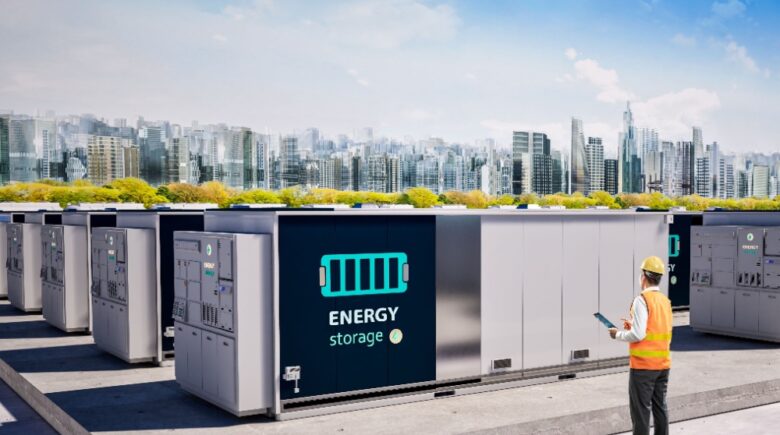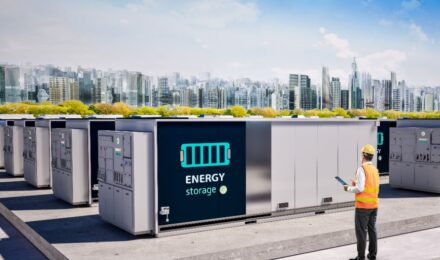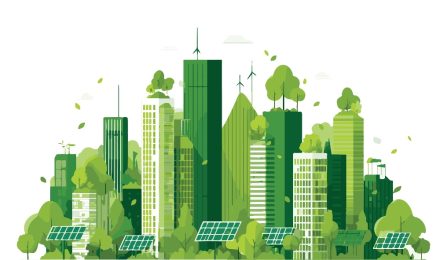As the world accelerates its shift toward renewable energy, one of the greatest challenges remains energy storage. While wind and solar power are abundant and sustainable, their intermittent nature means that energy must be stored efficiently for use when the sun isn’t shining or the wind isn’t blowing. This is where innovative storage technologies come in — reshaping the future of clean energy by making it more reliable, accessible, and efficient than ever before.
The Importance of Energy Storage
Renewable sources such as wind and solar play a critical role in reducing carbon emissions and mitigating the devastating impacts of climate change. However, unlike fossil fuels, these sources do not produce energy on demand.
Energy storage bridges this gap by ensuring a steady, reliable supply of power. Effective storage systems stabilize the grid, minimize energy waste, and promote wider adoption of renewable power across industries and homes.
Cutting-Edge Renewable Energy Storage Technologies
1. Advanced Lithium-Ion Batteries
Lithium-ion batteries have long been the backbone of modern energy storage, powering everything from electric vehicles (EVs) to home energy systems like Tesla’s Powerwall. Recent innovations have made them more efficient, durable, and affordable, supporting the global transition to renewables.
Their advantages include high energy density, rapid charging, and slow discharge rates. Thanks to new materials and chemistry, they now last longer than ever.
However, challenges remain — namely the high cost of production and environmental concerns linked to lithium mining.
2. Solid-State Batteries
Solid-state batteries are widely regarded as the next big leap in energy storage. Unlike conventional lithium-ion batteries that use liquid electrolytes, these use solid materials, making them safer, more stable, and longer-lasting.
Companies like Toyota are heavily investing in this technology, aiming to bring it to market within the next decade. With higher energy density, faster charging, and a lower risk of overheating, solid-state batteries could soon redefine how we store and use renewable energy.
3. Flow Batteries
Designed for large-scale, grid-level storage, flow batteries are emerging as a powerful solution for managing renewable energy on a massive scale. They store energy in liquid electrolytes housed in external tanks, allowing easy scalability and decades of use with minimal degradation.
Flow batteries can operate for up to 20 years, making them ideal for utilities seeking to store excess solar or wind energy for later use. Their slow, steady energy discharge makes them perfect for maintaining grid stability.
4. Hydrogen Energy Storage
Hydrogen storage could become the cornerstone of future clean energy systems. By using excess renewable electricity to split water into hydrogen through electrolysis, energy can be stored as hydrogen gas — which can later be converted back into electricity or used as a clean fuel for transportation and industry.
Hydrogen boasts zero carbon emissions, high energy capacity, and long-term storage potential. Yet, the technology faces hurdles such as high production costs and limited infrastructure. Despite these challenges, its potential to revolutionize global energy storage is immense.
5. Gravity-Based Energy Storage
This innovative system stores energy by using excess electricity to lift heavy materials—such as water or concrete blocks—and then generates power as they are lowered. It’s a simple yet elegant approach that offers long lifespans, low maintenance, and cost-effective performance.
Since it relies on readily available materials, gravity-based storage could provide an eco-friendly and sustainable complement to traditional battery systems.
6. Thermal Energy Storage
Thermal storage captures and retains heat for later use, making it a key player in solar thermal power plants. Systems like molten salt storage can hold excess heat during the day and convert it into electricity at night.
The benefits include cost-effectiveness for large-scale applications, high energy conversion efficiency, and usefulness in industrial heating and cooling. Thermal storage ensures that heat-based renewable energy can be harnessed whenever it’s needed most.
7. Flywheel Energy Storage
Flywheels store energy as kinetic motion through rapidly spinning rotors. When needed, the system converts that motion back into electricity. Unlike traditional batteries, flywheels don’t degrade over time and can cycle indefinitely with minimal maintenance.
They offer instant response times, high efficiency, and long lifespans, making them particularly useful for grid stabilization and backup power applications.
Powering the Future
The future of renewable energy depends on these groundbreaking storage innovations. From solid-state and flow batteries to hydrogen and gravity-based systems, these technologies are paving the way toward a cleaner, more sustainable world.
With ongoing investment, strong policy support, and continuous scientific breakthroughs, we are entering an era where renewable energy is no longer an alternative — it’s becoming the dominant force powering our planet.
As the world accelerates its shift toward renewable energy, one of the greatest challenges remains energy storage. While wind and solar power are abundant and sustainable, their intermittent nature means that energy must be stored efficiently for use when the sun isn’t shining or the wind isn’t blowing. This is where innovative storage technologies come in — reshaping the future of clean energy by making it more reliable, accessible, and efficient than ever before.
The Importance of Energy Storage
Renewable sources such as wind and solar play a critical role in reducing carbon emissions and mitigating the devastating impacts of climate change. However, unlike fossil fuels, these sources do not produce energy on demand.
Energy storage bridges this gap by ensuring a steady, reliable supply of power. Effective storage systems stabilize the grid, minimize energy waste, and promote wider adoption of renewable power across industries and homes.
Cutting-Edge Renewable Energy Storage Technologies
1. Advanced Lithium-Ion Batteries
Lithium-ion batteries have long been the backbone of modern energy storage, powering everything from electric vehicles (EVs) to home energy systems like Tesla’s Powerwall. Recent innovations have made them more efficient, durable, and affordable, supporting the global transition to renewables.
Their advantages include high energy density, rapid charging, and slow discharge rates. Thanks to new materials and chemistry, they now last longer than ever.
However, challenges remain — namely the high cost of production and environmental concerns linked to lithium mining.
2. Solid-State Batteries
Solid-state batteries are widely regarded as the next big leap in energy storage. Unlike conventional lithium-ion batteries that use liquid electrolytes, these use solid materials, making them safer, more stable, and longer-lasting.
Companies like Toyota are heavily investing in this technology, aiming to bring it to market within the next decade. With higher energy density, faster charging, and a lower risk of overheating, solid-state batteries could soon redefine how we store and use renewable energy.
3. Flow Batteries
Designed for large-scale, grid-level storage, flow batteries are emerging as a powerful solution for managing renewable energy on a massive scale. They store energy in liquid electrolytes housed in external tanks, allowing easy scalability and decades of use with minimal degradation.
Flow batteries can operate for up to 20 years, making them ideal for utilities seeking to store excess solar or wind energy for later use. Their slow, steady energy discharge makes them perfect for maintaining grid stability.
4. Hydrogen Energy Storage
Hydrogen storage could become the cornerstone of future clean energy systems. By using excess renewable electricity to split water into hydrogen through electrolysis, energy can be stored as hydrogen gas — which can later be converted back into electricity or used as a clean fuel for transportation and industry.
Hydrogen boasts zero carbon emissions, high energy capacity, and long-term storage potential. Yet, the technology faces hurdles such as high production costs and limited infrastructure. Despite these challenges, its potential to revolutionize global energy storage is immense.
5. Gravity-Based Energy Storage
This innovative system stores energy by using excess electricity to lift heavy materials—such as water or concrete blocks—and then generates power as they are lowered. It’s a simple yet elegant approach that offers long lifespans, low maintenance, and cost-effective performance.
Since it relies on readily available materials, gravity-based storage could provide an eco-friendly and sustainable complement to traditional battery systems.
6. Thermal Energy Storage
Thermal storage captures and retains heat for later use, making it a key player in solar thermal power plants. Systems like molten salt storage can hold excess heat during the day and convert it into electricity at night.
The benefits include cost-effectiveness for large-scale applications, high energy conversion efficiency, and usefulness in industrial heating and cooling. Thermal storage ensures that heat-based renewable energy can be harnessed whenever it’s needed most.
7. Flywheel Energy Storage
Flywheels store energy as kinetic motion through rapidly spinning rotors. When needed, the system converts that motion back into electricity. Unlike traditional batteries, flywheels don’t degrade over time and can cycle indefinitely with minimal maintenance.
They offer instant response times, high efficiency, and long lifespans, making them particularly useful for grid stabilization and backup power applications.
Powering the Future
The future of renewable energy depends on these groundbreaking storage innovations. From solid-state and flow batteries to hydrogen and gravity-based systems, these technologies are paving the way toward a cleaner, more sustainable world.
With ongoing investment, strong policy support, and continuous scientific breakthroughs, we are entering an era where renewable energy is no longer an alternative — it’s becoming the dominant force powering our planet.



